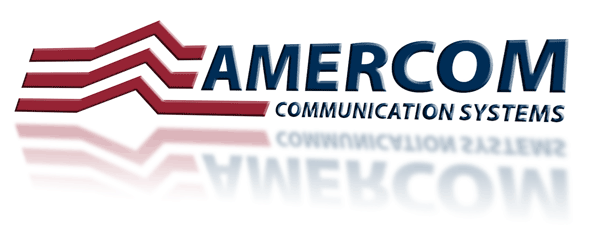
Visit our other sites:



Copyright © 2002 - 2015 American City Homes Organization of Companies. All Rights Reserved.
Amercom Communication Systems, LLC
 | ||||


Smart Technology
That Saves Money

The emerging range of Internet Protocol (IP) - enabled services, including Voice over Internet Protocol (VoIP), represent the most fundamental shift in telecommunications technology since Alexander Graham Bell got us talking 127 years ago. This shift to IP networks enables a revolutionary set of converged voice, data and video applications, bringing better features at lower prices for users, better applications for business, and benefits for the information society as a whole.
Business and consumer users are examining how to take advantage of the efficiencies and advanced communications capabilities of IP-based technology. There had been many reasons for resistance to VoIP adoption in the past, including its reliability and quality. But significant improvements are beginning to put IP voice quality on a par with traditional circuit-switched voice. Such improvements are the result of market-driven standards development and major investments by network operators, service providers, and equipment manufacturers.
Things Are Changing!
The world is getting smaller as the field of telecommunications expands. The latest and biggest thing happening in telecommunications is voice over IP technology. VoIP is winning over millions of customers for a number of reasons, not the least of which is the amount of money users can save!
Voice over IP entails methods for connecting callers over the internet rather than over traditional phone lines. Just as it doesn't cost you extra to look at a website in Mexico, with VoIP it shouldn't cost extra to make a phone call to Mexico. For this reason, voice over IP technology is causing a lot of excitement throughout the international community.
Voice over IP (VoIP) is a type of phone system that uses an internet connection, rather than a traditional phone line, to transmit voice traffic. One of the most popular reasons for choosing VoIP is cost savings: VoIP service plans are typically less expensive than traditional phone system costs, systems require minimal maintenance, and costs are extremely low- no long distance charges are applied when you use a VoIP system. VoIP service provides standard features like call tracking and online system management.
To use a VoIP system, you’ll need three things:
Most residences and businesses already have a broadband internet connection fast enough to accommodate a VoIP system- typically a bandwidth of 90 kbps is sufficient. Finding a VoIP service plan is easy if you know what to look for- VoIP vendors design service plans to suit small companies, large corporations with multiple offices, households, and every type of user in between.
Most companies will require that you use VoIP-compatible phone equipment- you can purchase VoIP phones or VoIP adaptors, or use the microphone and speakers connected to your computer to make calls.

What is VoIP?
Voice over IP (VoIP) is a general term for a family of transmission technologies for delivery of voice communications over IP networks such as the Internet or other packet-switched networks. Other terms frequently encountered and synonymous with VoIP are IP telephony, Internet telephony, voice over broadband (VoBB), broadband telephony, and broadband phone.
Internet telephony refers to communications services — voice, facsimile, and/or voice-messaging applications — that are transported via the Internet, rather than the public switched telephone network (PSTN). The basic steps involved in originating an Internet telephone call are conversion of the analog voice signal to digital format and compression/translation of the signal into Internet protocol (IP) packets for transmission over the Internet; the process is reversed at the receiving end.
VoIP systems employ session control protocols to control the set-up and tear-down of calls as well as audio codecs which encode speech allowing transmission over an IP network as digital audio via an audio stream. Codec use is varied between different implementations of VoIP (and often a range of codecs are used); some implementations rely on narrowband and compressed speech, while others support high fidelity stereo codecs.
History
Protocols
See also: Comparison of VoIP software
Voice over IP has been implemented in various ways using both proprietary and open protocols and standards. Examples of technologies used to implement Voice over IP included
The Session Initiation Protocol has gained widespread VoIP market penetration, while H.323 deployments are increasingly limited to carrying existing long-haul network traffic.
A notable proprietary implementation is the Skype protocol.
Adoption By:
A major development starting in 2004 has been the introduction of mass-market VoIP services over Broadband Internet access services, in which subscribers make and receive calls as they would over the PSTN (public switched telephone network). Full-service VoIP phone companies provide inbound and outbound calling with Direct Inbound Dialing. Many offer unlimited domestic calling, and some to other countries as well, for a flat monthly fee as well as free calling between subscribers using the same provider. These services have a wide variety of features which can be more or less similar to traditional POTS.
There are three common methods of connecting to VoIP service providers:
It is becoming increasingly common for telecommunications providers to use VoIP telephony over dedicated and public IP networks to connect switching stations and to interconnect with other telephony network providers; this is often referred to as "IP backhaul".
"Dual mode" telephone sets, which allow for the seamless handover between a cellular network and a Wi-Fi network, are expected to help VoIP become more popular.
Phones such as the NEC N900iL, many of the Nokia E-series and several other Wi-Fi enabled mobile phones have SIP clients built into the firmware. Such clients operate independently of the mobile phone network (however some operators choose to remove the client from subsidised handsets). Some operators such as Vodafone actively try to block VoIP traffic from their network. Others, like T-Mobile, have refused to interconnect with VoIP-enabled networks as was seen in the legal case between T-Mobile and Truphone, which ultimately was settled in the UK High Court in favour of the VoIP carrier.
Because of the bandwidth efficiency and low costs that VoIP technology can provide, businesses are gradually beginning to migrate from traditional copper-wire telephone systems to VoIP systems to reduce their monthly phone costs.
VoIP solutions aimed at businesses have evolved into "unified communications" services that treat all communications—phone calls, faxes, voice mail, e-mail, Web conferences and more—as discrete units that can all be delivered via any means and to any handset, including cellphones. Two kinds of competitors are competing in this space: one set is focused on VoIP for medium to large enterprises, while another is targeting the small-to-medium business (SMB) market.
VoIP runs both voice and data communications over a single network, which can significantly reduce infrastructure costs.
The prices of extensions on VoIP are lower than for PBXs and key systems. VoIP switches run on commodity hardware, such as PCs or Linux systems. Rather than closed architectures, these devices rely on standard interfaces.
VoIP devices have simple, intuitive user interfaces, so users can often make simple system configuration changes. Dual-mode cellphonesWi-Fi network, so that it is no longer necessary to carry both a desktop phone and a cellphone. Maintenance becomes simpler as there are fewer devices to oversee. enable users to continue their conversations as they move between an outside cellular service and an internal
Skype, which originally marketed itself as a service among friends, has begun to cater to businesses, providing free-of-charge connection between any users on the Skype network and connecting to and from ordinary PSTN telephones for a charge.
In the United States the Social Security Administration (SSA) is converting its field offices of 63,000 workers from traditional phone installations to a VoIP infrastructure carried over its existing data network.